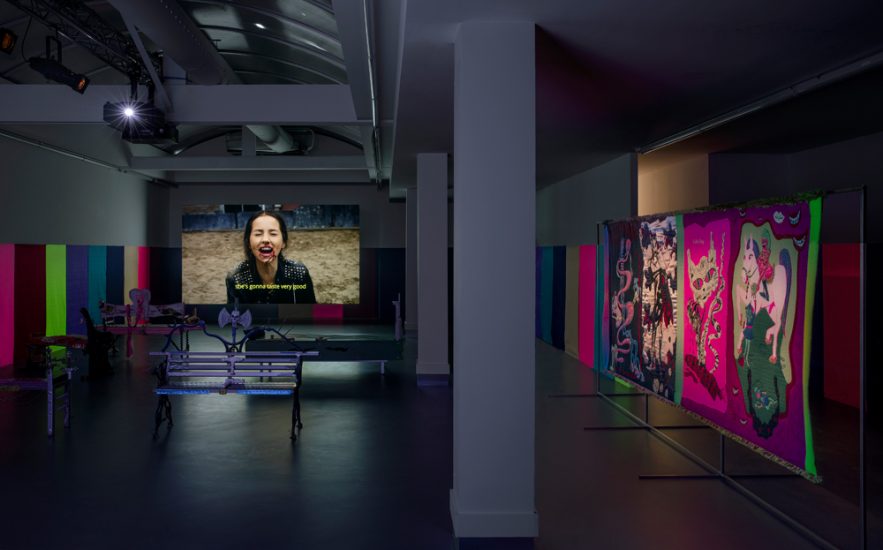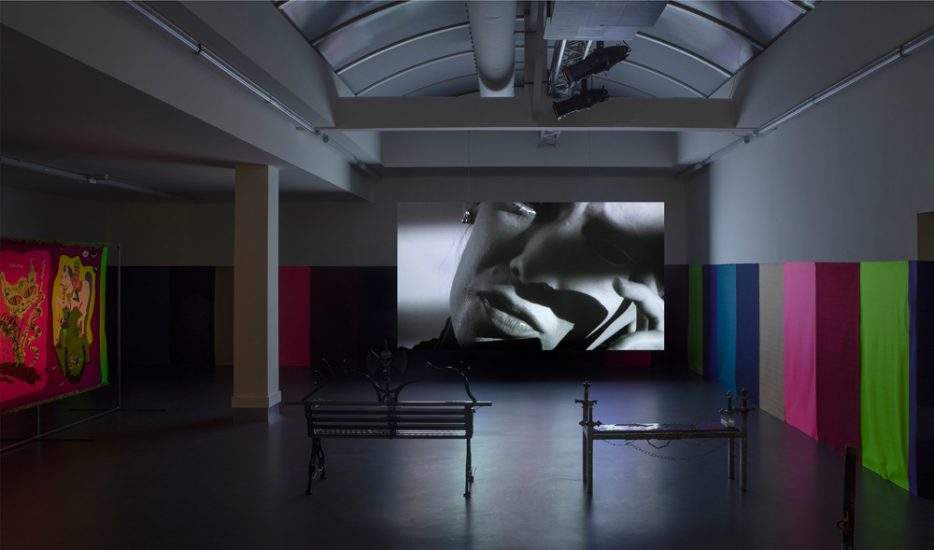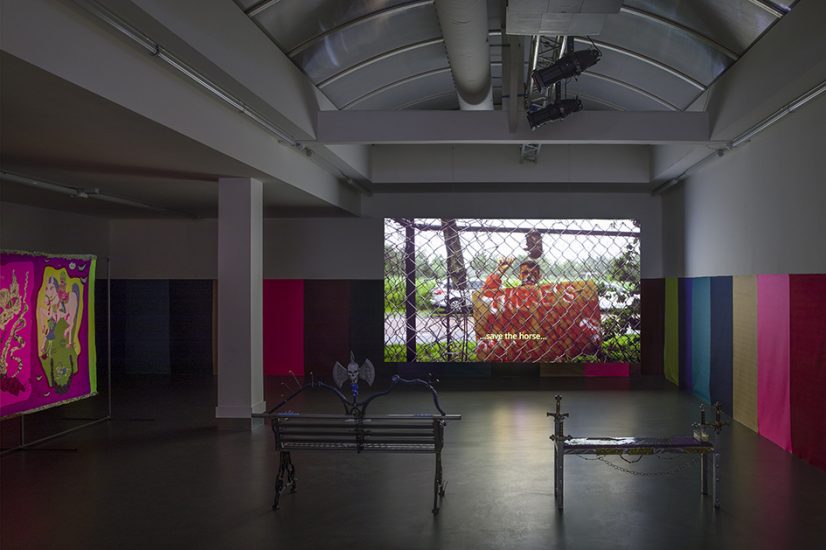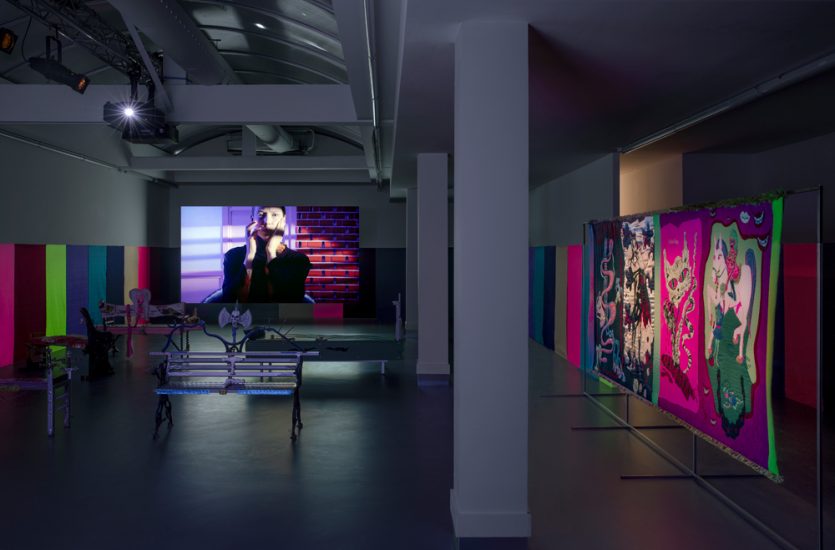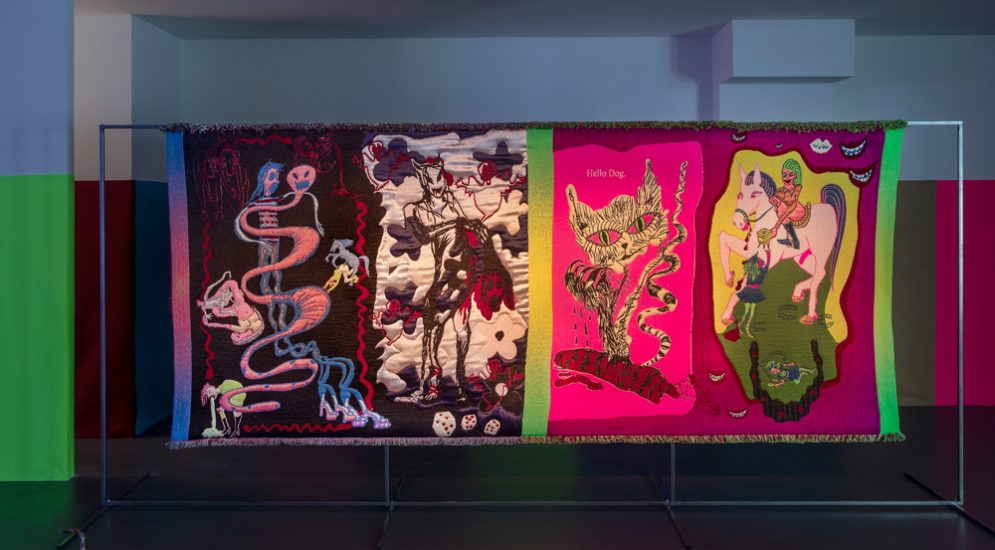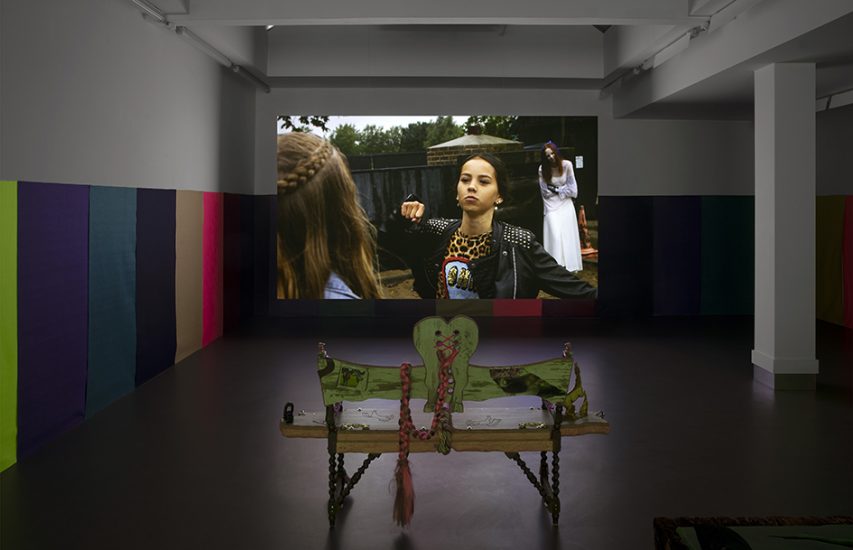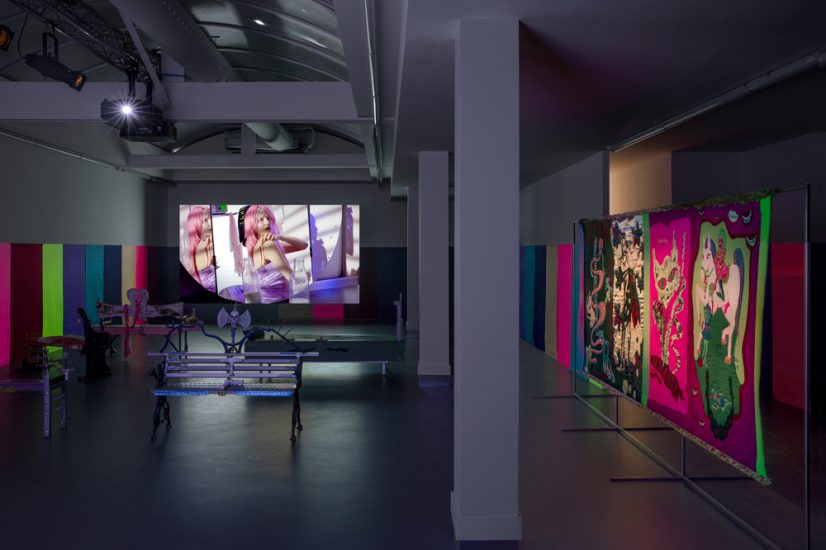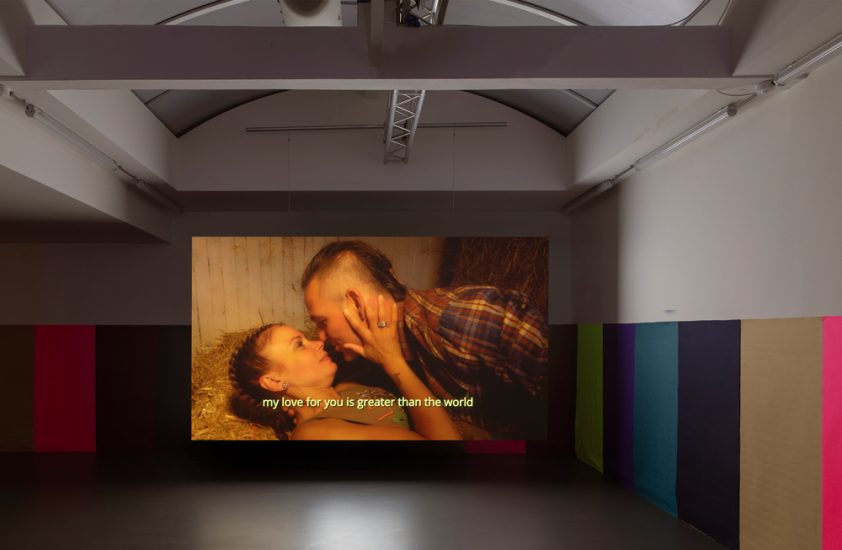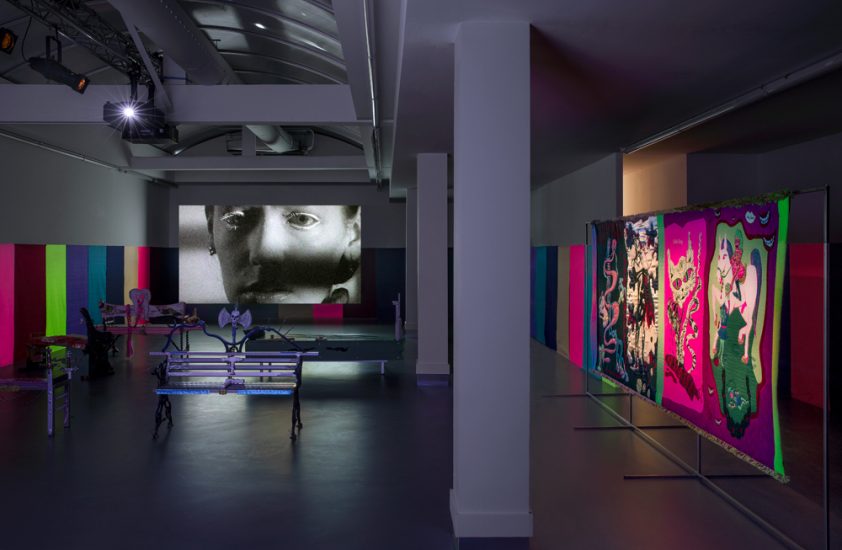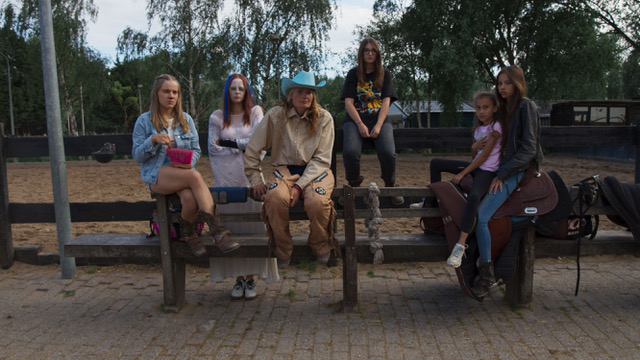Josefin Arnell & Margaret Haines
Frenemy
Once upon a time there was a cat who lived in a field beside a river. He often wished he could swim – for across the water was a large pigeon house full of tame and well-fed birds. One day someone brought a horse and put it in the field and the two animals started to talk. I’m thinking of swimming across the river to graze on some of that lovely ripening corn on the other side said the horse. I can’t swim. Take me on your back please said the cat. The horse agreed and soon they were crossing the river, with the cat holding onto the horse’s mane. On the opposite bank, the horse started to graze while the cat leapt on the pigeons, killing several and gorging himself in a very short time. When he was completely full, the cat started to howl and prance about. The horse tried to stop him. Be careful he said the villagers will come and hearing that terrible racket they will do us harm. The cat only said I always do this after I beat. It is my habit. The horse was annoyed because it took much longer to eat his fill.
Presently the people of the village heard the cat cries, and they came with sticks and stones and attacked the two animals. The horse had to stop eating and with the cat on his back, he swam across the river once more. You’ve ruined everything the horse told his companion. Now we can’t go back and I’m still hungry. The cat simply said that I can’t help it as it a habit I have. Suddenly the horse started to roll on the grass, trapping the cat beneath him. You’re killing me. I can feel my backbone crack. You Don’t know what you’re doing screamed the cat. The horse only said well you see it’s my nature after swimming. I always roll.
From ‘Knowing how to Know’ by Indris Shah (1924-1996)
The exhibition Frenemy by Josefin Arnell and Margaret Haines takes alternative forms and ideas about friendship, communication and solidarity as its point of departure: exploring the different sides and phases that friendships often have. In two quite different ways, both practices have a clear feminist and queer approach and are influenced by trends and codes of popular culture.
Margaret Haines’ film Ashes: Episode 1 of On Air: Purity, Corruption & Pollution (2022) explores trauma through absolution—the ecclesiastical release from sin—via a monologue centering on blood transfusions, adrenochrome as a narcotic substance, women excluded from places of worship and the concept of revenge in relation to the soteriological practices and rituals within witchcraft movements. Set in 2047, within the monologue we are introduced to the aftershock of an unknown disaster, the apocalypse or a series of traumatic events. A cyborg-like character, Charlot (actress and performance artist Jette Loona Hermanis) postures and briefly mimics expressions and representations of messianic figures (such as Jeanne d’Arc) as she reveals details of the event, which hinges for the viewer on the unknown, and current possibilities within the present day of radical revolution, or destruction.
The film references sci-fi and multi-temporality through tableaux, editing, lighting, set design, still frames and color substitutions; as well as further coming episodes, and a larger project, if only via its title, an upcoming narrative biography by Haines of Californian poet, artist and mystic Marjorie Cameron (1922-1995). Music by composer Sky H1 scores the scene, where within a blood-drenched dressing room and attire, Charlot recites mysterious ruminations about her circumstance: “Nowhere is…Nowhere is Paradise. Nulle part le Paradis. Ecclesia abhorret a sanguine. The Church abhors flowing blood.” A final shot focuses on a short drive to the California Army National Guard amidst fire skies, revealing a piecemeal indication for the context of a more violent aftermath.
Josefin Arnell’s video Wild Filly Story (2020) is situated at a therapeutic pony ranch (zorgboerderij) in Amsterdam North. The script is partly based on the artist’s own personal story. “As a child when my home was unsafe, I went to the stable, I picked up shit to ride for free. Trying to master a big animal body when actually I was dead-scared. I found older female role-models that didn’t care about boys but for their horses. If you were cool you could ride their horses.” The video is directed in the form of a reality show with actors who had never been part of a film shoot before.
The actors are everyday visitors, who are there to ride, who are there for occupational therapy, or employees of the stable. Specifically, the film focuses on the complicated relationship of friendship, between love and control. The five main girl characters are shifting positions of power, they submit and take it when they can. Wild Filly Story starts and continues concentrating on humans’ desires and their desire for horses. Within the context of this specific stable, the horses are being used as therapeutic tools. The symbiotic relationship of healing is highlighted by the consumption of a BBQ party serving the horse’s flesh. As a form of co-dependency? If so, it would for sure point out different varieties of frenemy.
The films have very different formal approaches to filmmaking which to an extent creates a dialectic between the two lens-based works, which signals and circles back to the concept of frenemy. In addition to the video’s a series of five benches (made in collaboration with Alexis Bondoux and Noah Cohen) and a large-scale tapestry are being presented. The 3.5-meter-wide tapestry is referring to four different rather dark characteristic sides that may occur within a friendship: gossip, pure evil, vengeance and (slimy) manipulation. The furniture contains abstract and cliche references to the films. Both works are commissioned by ROZENSTRAAT/ a rose is a rose is a rose.
The exhibition is kindly supported by Canada Council for the Arts, Amsterdam fonds voor de kunst, Mondriaan Fonds and Stichting Stokroos.
Read Nadia de Vries’s essay about the exhibition Frenemy here.
Press:
De Groene Amsterdammer, Vijand vermomd als vriend by Roos van der Lint, February 23 2022
NRC, Tegendraadse kunst,Texas-melancholie en hooligans by Hans den Hartog Jager, February 2 2022
